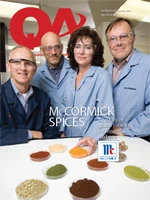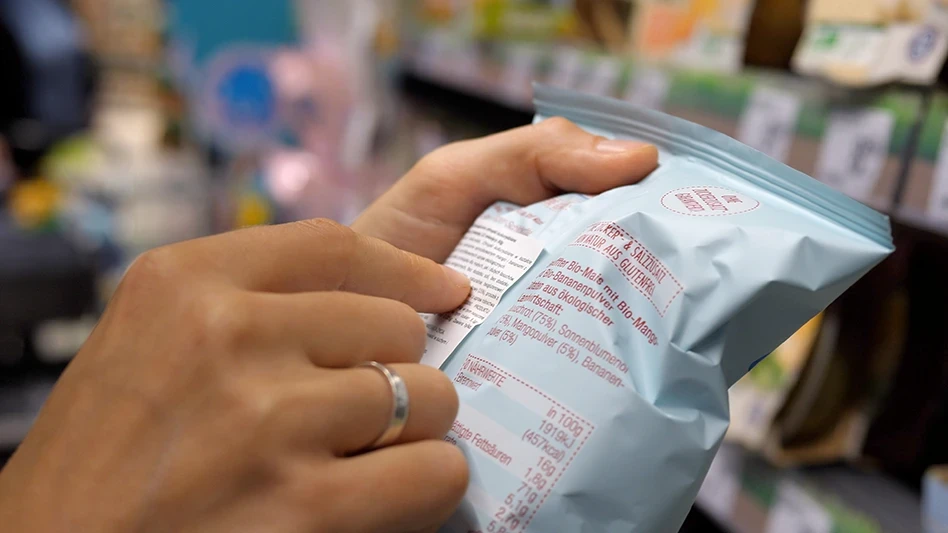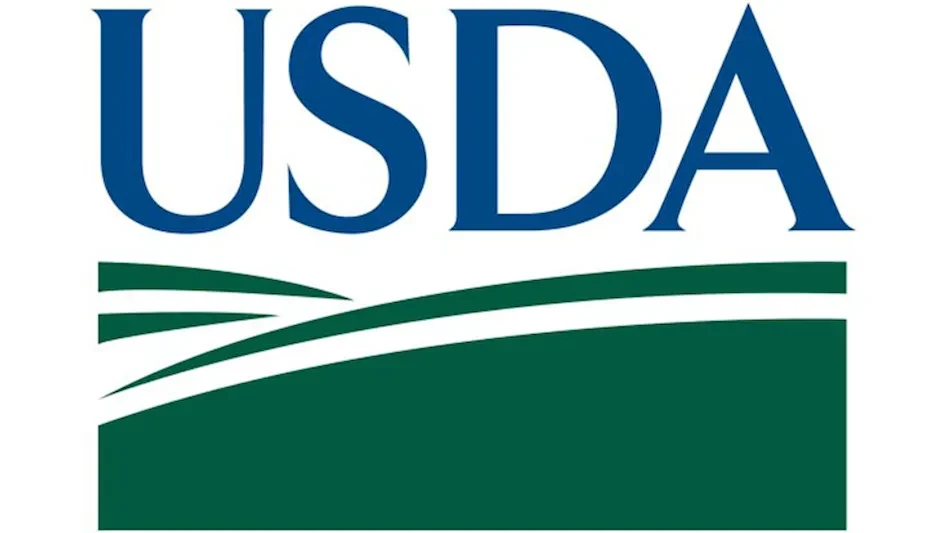This spring the USDA Food Safety and Inspection Service (FSIS) issued a draft guidance for public comment designed to clarify regulations concerning HACCP validation.
In addition to the commonly accepted definition and terminology of the HACCP plan, however, the guidance defines and focuses on "additional activities that make up the entire HACCP system." That means that more than just CCPs must be validated, explained FSIS Administrator Alfred Almanza in his introduction to the guidance document, which continued, "Increasingly, establishments use prerequisite programs as part of their HACCP system, particularly as support for why the establishment considers a food safety hazard to be not reasonably likely to occur."
Because of this, the prerequisites are considered to be part of the HACCP system. As the guidance document explains:
It is important for establishments to realize that those prerequisite programs designed to support a decision in the hazard analysis are part of the HACCP system. For example, when an establishment determines that a hazard is not reasonably likely to occur because the prerequisite program prevents the hazard, that prerequisite program then becomes part of the HACCP system. These prerequisite programs provide a foundation for the HACCP plan to operate effectively. Therefore, these prerequisite programs need to be part of the establishment’s validation activities to demonstrate that the overall system is validated and can operate effectively.
Why the increased focus on prerequisite programs (PRPs)? And what is important in PRPs? In a session at the 2010 Food Safety Summit in Washington, D.C., in April, leaders from three food companies discussed the importance and implementation of their prerequisite programs.
Protecting Produce. A provider of fruits and vegetables, The Giumarra Companies’ strongest focus and key food safety initiatives are driven by prerequisite programs. "Our field programs don’t have formal HACCP programs," said Walter Ram, Director of Food Safety. Instead, its food safety is based on Good Agriculture Practices, SQF and other programs that are HACCP-based but not HACCP programs.
Highly effective as it stands, the program would not work the other way around. That is, Ram said, "PRPs can be extremely effective even in the absence of HACCP, but no HACCP plan can be effective without sound PRPs."
Fresh farm produce is grown in unsanitary environments, Ram said, with people, water and animals as the basic hazards in farming. Because it does not go through further processing, there is also no kill step for fresh produce. So prerequisites and their verification are critical for food safety.
"Prerequisites are the action items of a HACCP program. They are where our preventive and mitigation strategies are actually put to work," Ram said. Strategies that are focused on the three hazards with specified verification steps for each include:
- people: employee hygiene, handwashing and training are among the key initiatives for field workers.
- animals: because they present a great challenge to farming, Giumarra prohibits domestic animals from the fields and monitors for wildlife.
- water: as a vehicle for numerous food safety hazards, monitoring and testing of water sources is key.
Giumarra includes verification strategies for each, but the real key is the initiative itself. "Verification and auditing are nothing more than someone verifying that we’re doing what we say we’re doing," Ram said.
Fast Food Feeder. As a major provider to McDonalds and other fast food chains, prerequisites are used at Golden State Foods to reduce the likelihood of exposure to hazards that can contaminate and/or proliferate, said Clement Saseun, Director of Quality Systems.
When the processor first implemented a HACCP program in the 1970s, the company had 17 CCPs. "Everything at that time was a CCP," Saseun said, adding that it is now not odd to have no CCPs. "It is possible if you have properly deployed your prerequisite program."
A thorough prerequisite program is based on Good Manufacturing Practices (GMPs) and Sanitary Standard Operating Practices (SSOPs) which "are known as the cornerstone for food safety and quality," Saseun said. "It is important that all employees and management have an understanding of this program and participate in GMPs."
Standard GMPs, he continued, should cover personnel, equipment, the facility, raw materials and education/training. However, "GMPs are not designed to control specific hazards, but are intended to prevent having unnecessary CCPs in your HACCP program," and to provide guidelines for safe, quality food.
Each of the areas to be addressed have their own challenges, many of which are caused by world changes since GMPs were written and last revised. For example, body piercings and technology have added to personnel challenges. "When GMPs were written, nobody thought we would be piercing every part of our bodies," Saseun said, asking, How do you rewrite your GMP program to address that? Today’s attachment to cell phones and mp3 players are also challenging; "these were not part of the equation when GMPs were put in place," he said.
If you really want to know how your seven-day operation is complying with GMPs, Saseun continued, "Go to your plant on a Saturday or Sunday afternoon. The truth is GMPs can’t take off weekends."
Aging equipment also can be a GMP challenge, particularly if paint is used as a cure-all. "Each time you paint it is a matter of time until it will flake; and each time it flakes, it is a GMP violation," he said. Attaining and maintaining proper airflow, pest control, and sloping of floors were given as examples of facility challenges; and a well-articulated and functioning supplier approval program, good receiving and storage practices, and proper resealing and tagging of partial bags among those for raw materials.
Saseun also recommended the staffing of a "GMP czar" whose sole function is to focus on GMPs, write up violations and immediately correct them; Field Trip Friday, in which managers pair up to search the plant for temporary fixes and immediately remove them; and graphing of GMP audit findings to identify trends.
"Interaction of various prerequisite programs, including GMPs, can make or break the best written HACCP program," Saseun concluded.
Safeguarding 61 Brands. At Kraft Foods, a primary goal is "trying to take the hazard out with a prerequisite, so we don’t have to have them as CCPs," said Larry Cohen, principal scientist, global micro and food safety.
As such, environmental monitoring is a key initiative in Kraft plants for early detection and correction, with prerequisites focusing on chemical, microbiological and physical hazards.
One example of such a prerequisite is that of monitoring for pathogens. It is critical to focus on the entire plant with an eye toward detection of pathogens and/or organisms that indicate potential presence of pathogens. By doing so, he said, you are taking out those points before they would have to become a CCP.
Cohen sees pathogen control as the sum of Air, Water Controls & Traffic Patterns + GMPs + Dry, Uncracked, Clean Floors, Walls, Ceilings + Sanitary Design + Sanitation Procedures. Timely assessment of ready-to-eat (RTE) environments is especially critical with randomized sampling and plans targeted to each specific line and facility.
"Programs plus data equals control. One without the other is inconclusive," Cohen added. And, as the FSIS guidance indicates, such data in prerequisite programs are likely to become mandatory. "You will have to have documented prerequisite programs," Cohen said. "If FDA or USDA come in, they will want to see these."
The author is Managing Editor of QA magazine. She can be reached at llupo@giemedia.com

Explore the June 2010 Issue
Check out more from this issue and find your next story to read.
Latest from Quality Assurance & Food Safety
- FSIS to Host Virtual Public Meetings on Salmonella Framework
- Climate-Smart Soybeans Enter U.S. Market
- Yoran Imaging Introduces Thermal Imaging-Enabled System for Induction Seal Inspection and Analysis
- GDT Highlights Food Safety Solutions for Food Processing and Packaging Facilities
- FSIS Issues Public Health Alert for Ineligible Beef Tallow Products Imported from Mexico
- Wolverine Packing Co. Recalls Ground Beef Products Due to Possible E. Coli Contamination
- McDonald’s USA, Syngenta and Lopez Foods Collaborate to Help Produce Beef More Sustainably
- Divert and PG&E Announce Interconnection in California to Address Wasted Food Crisis





